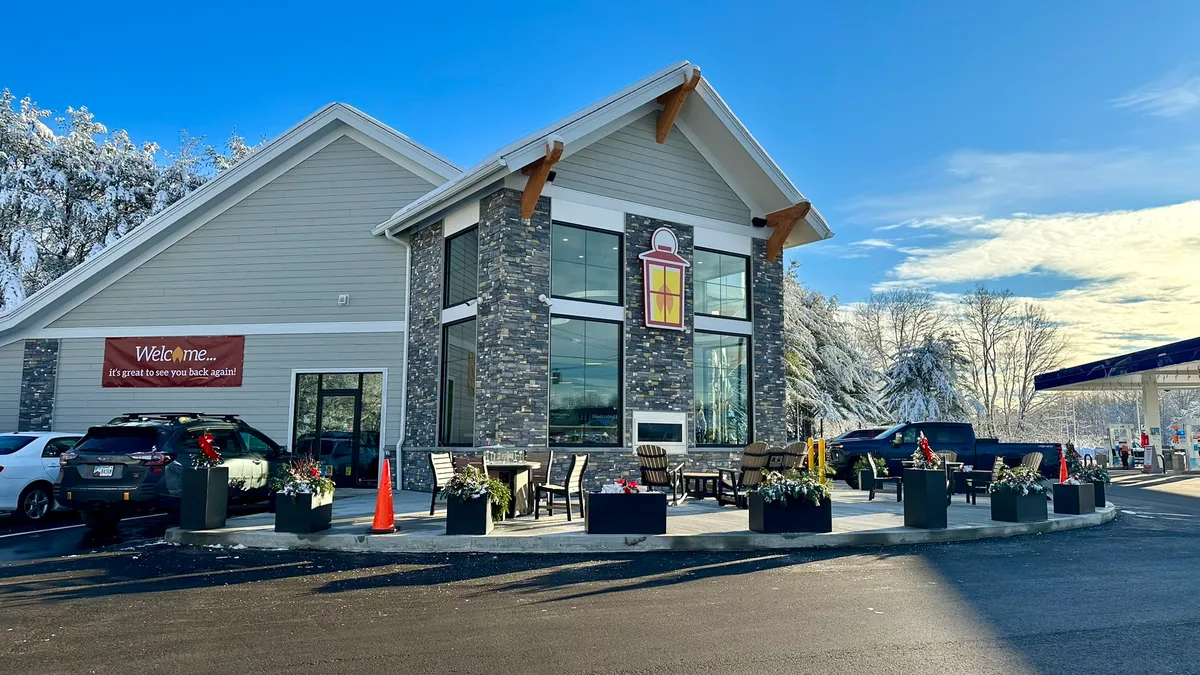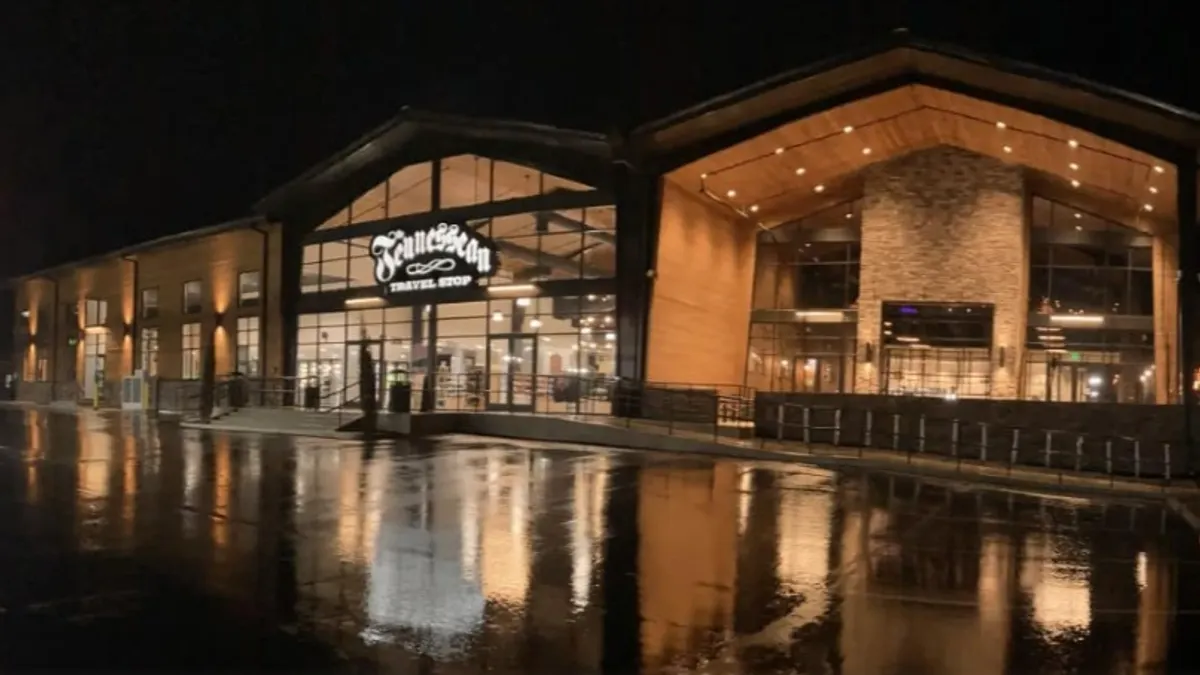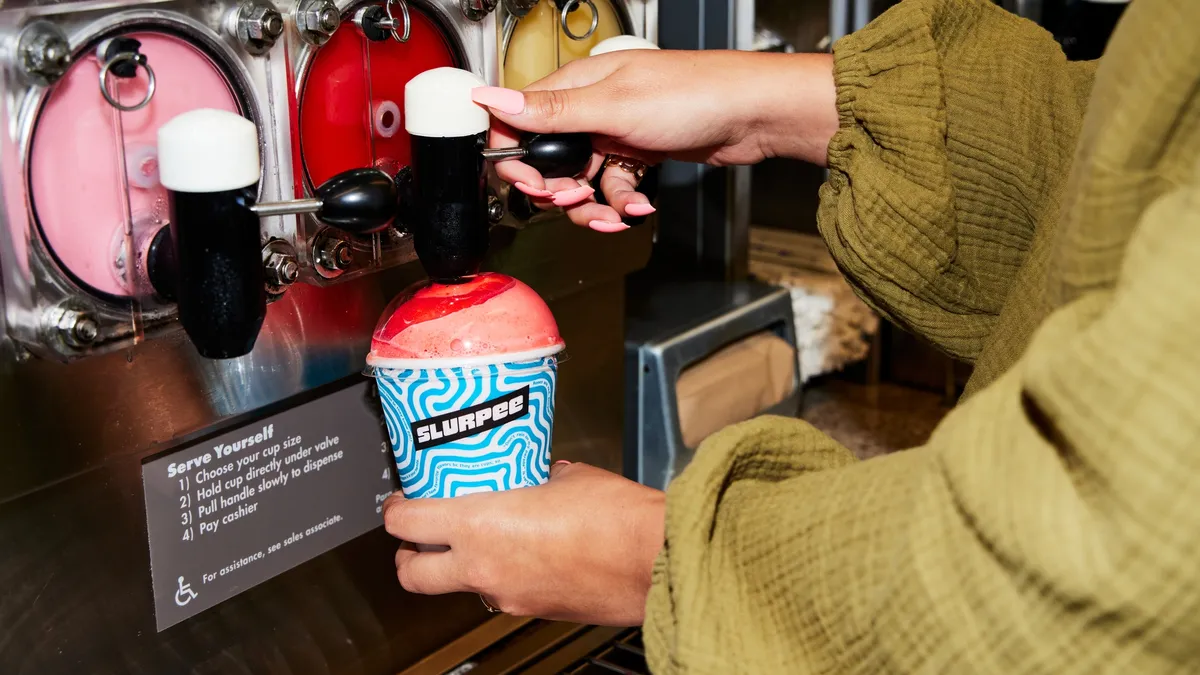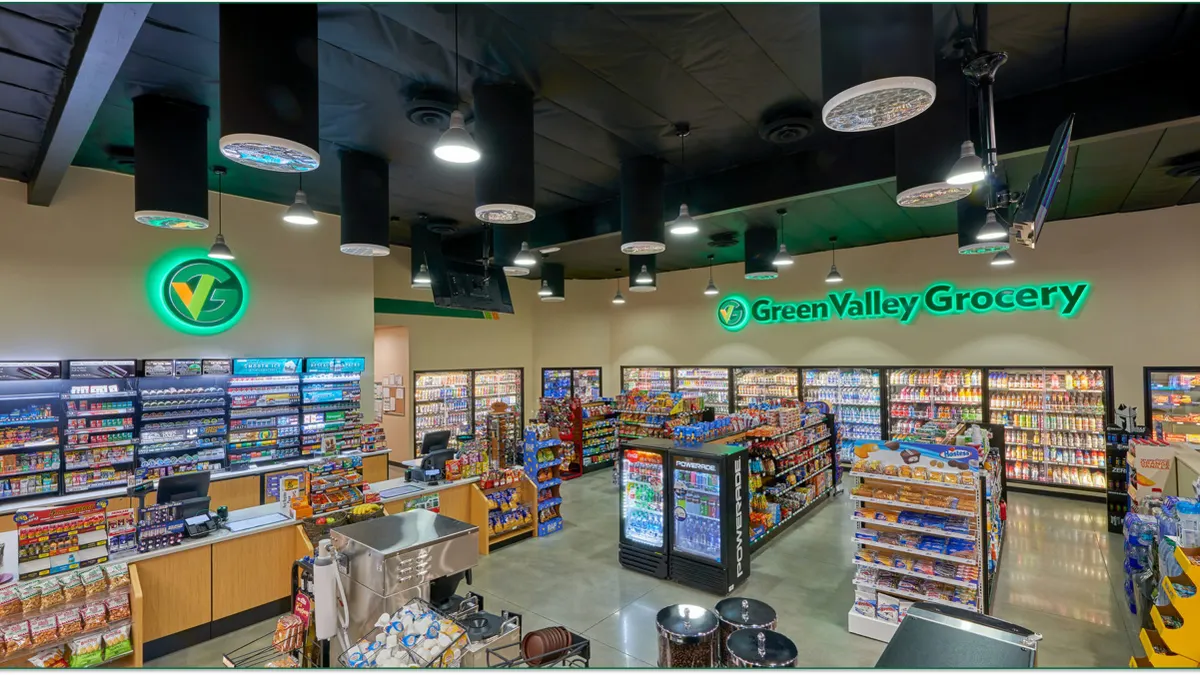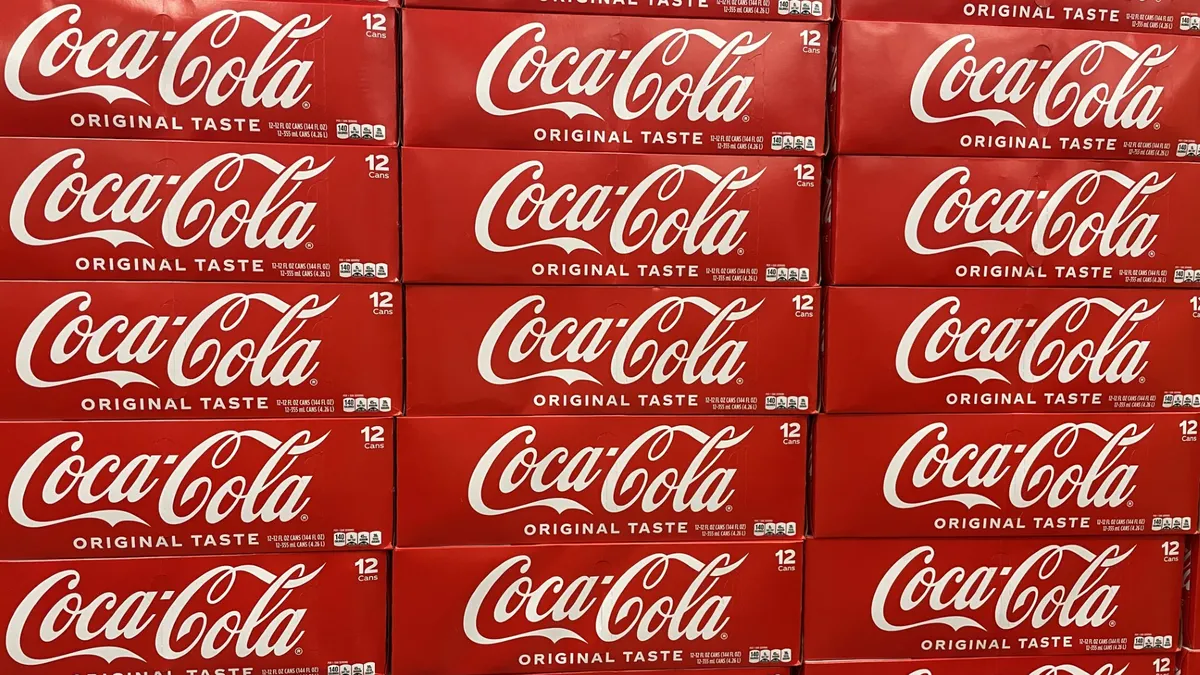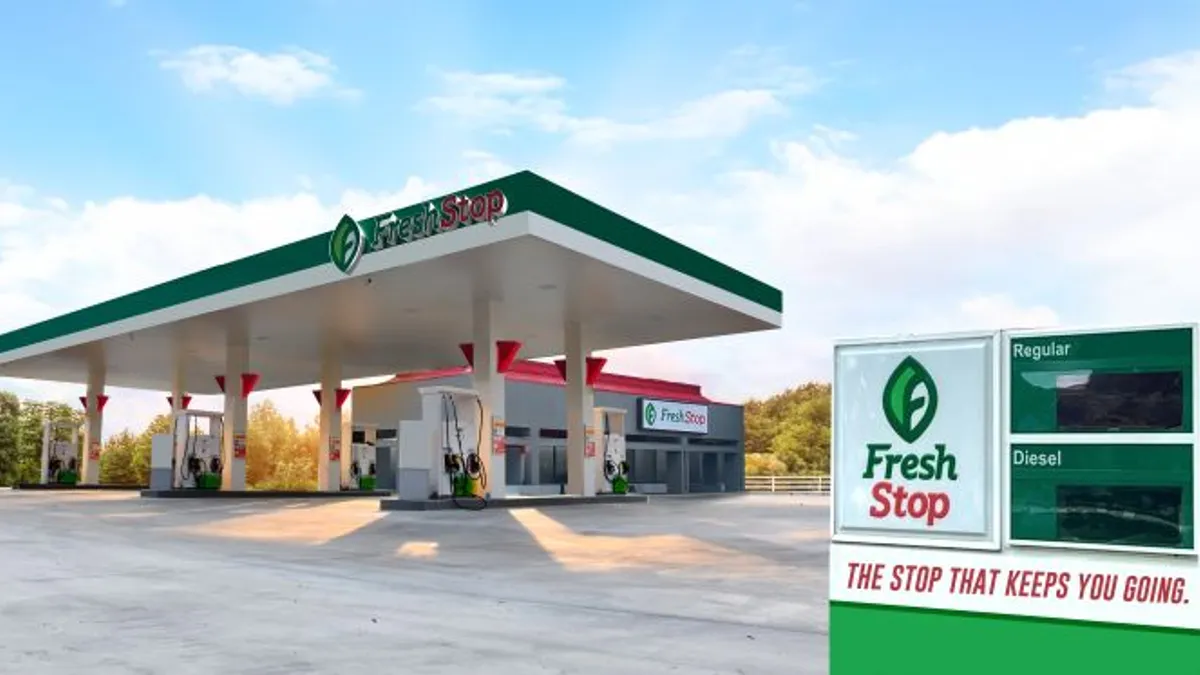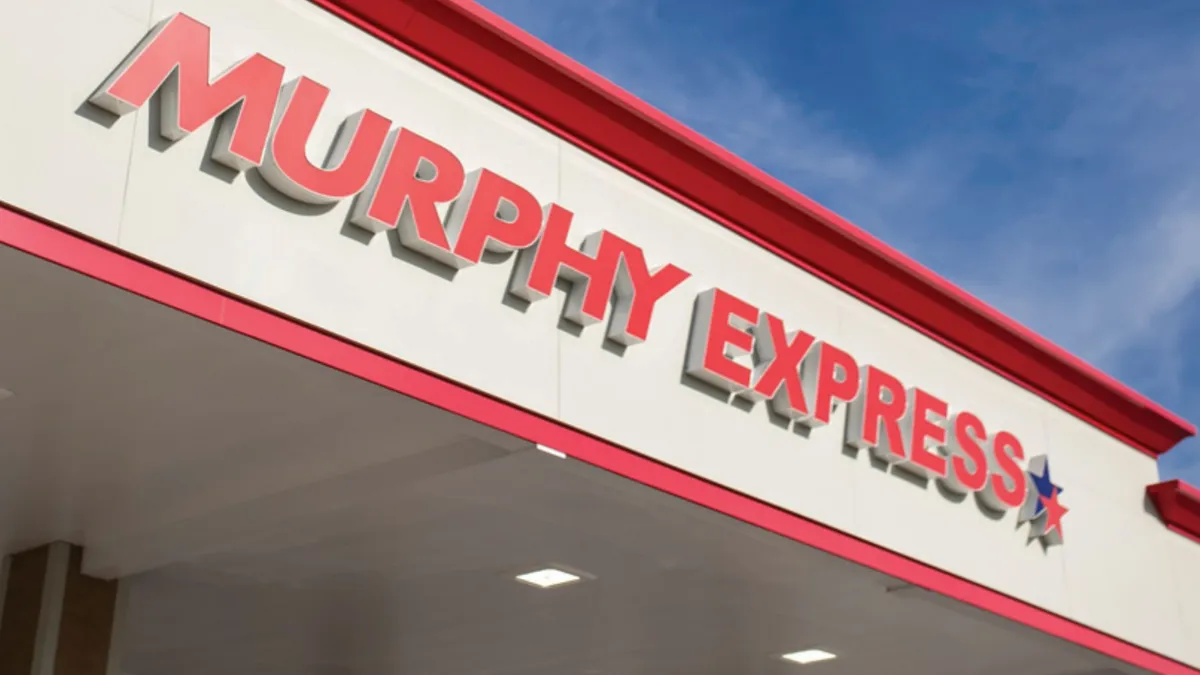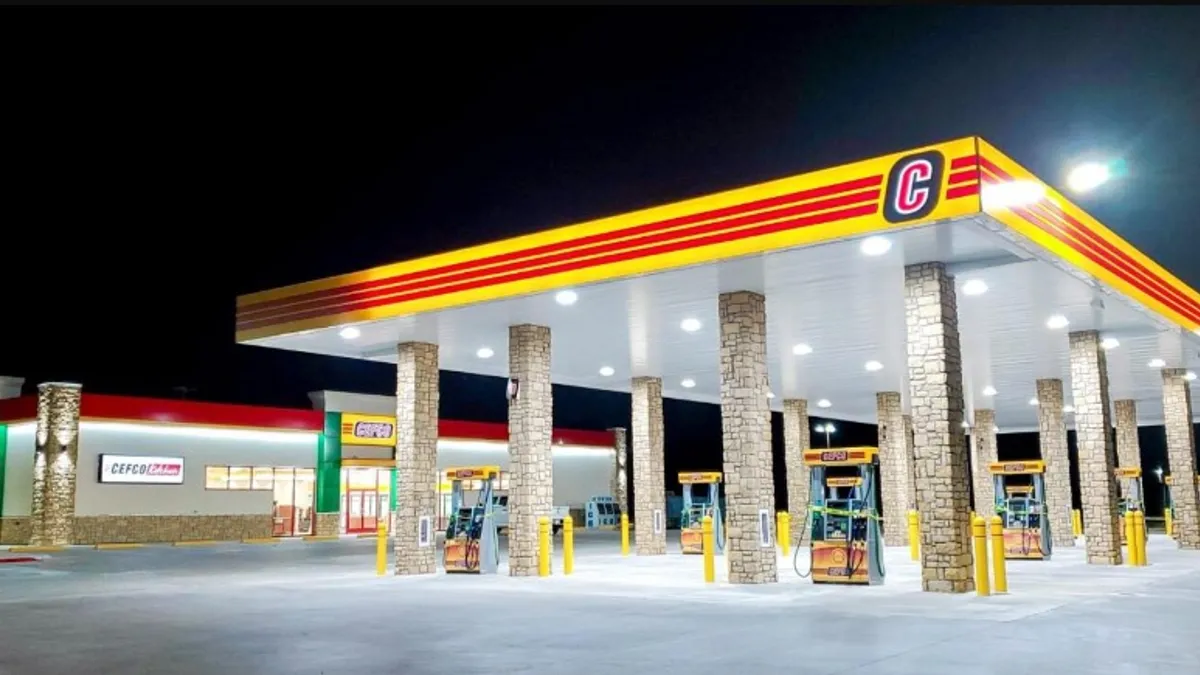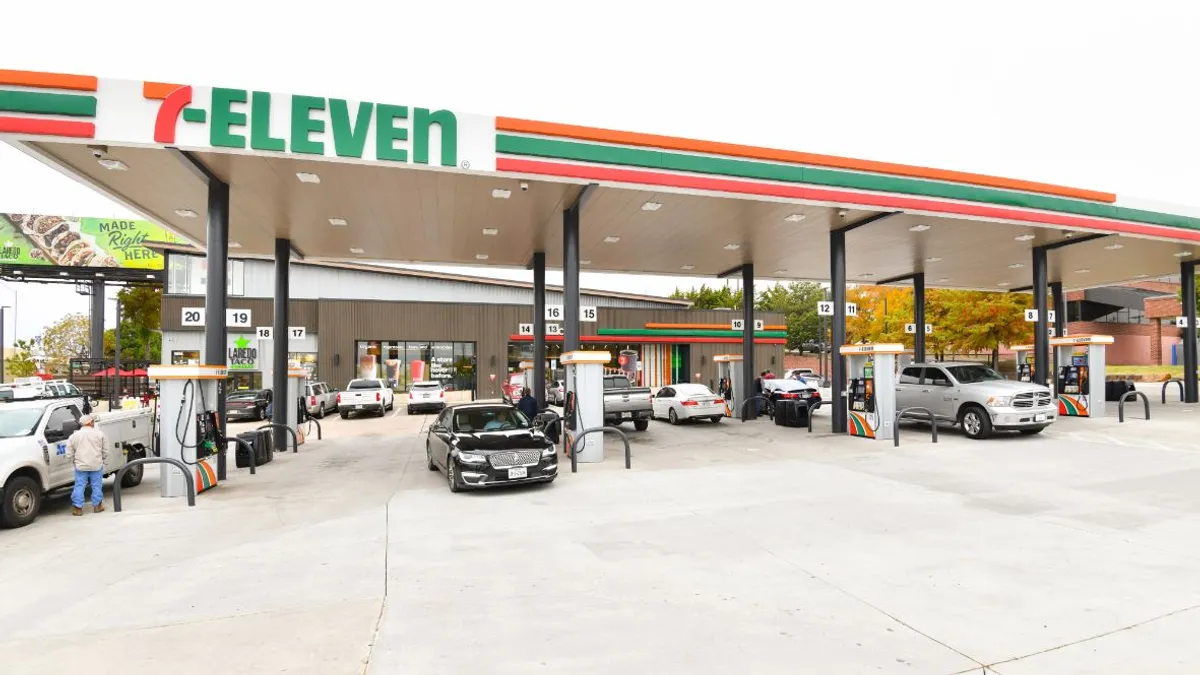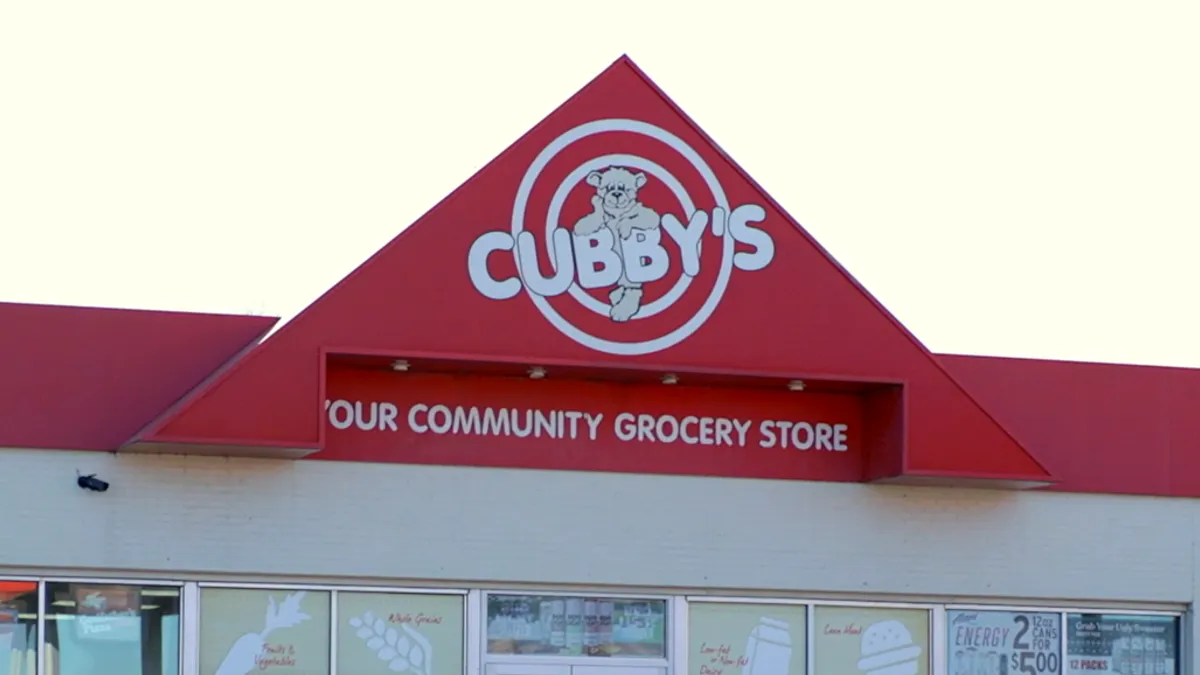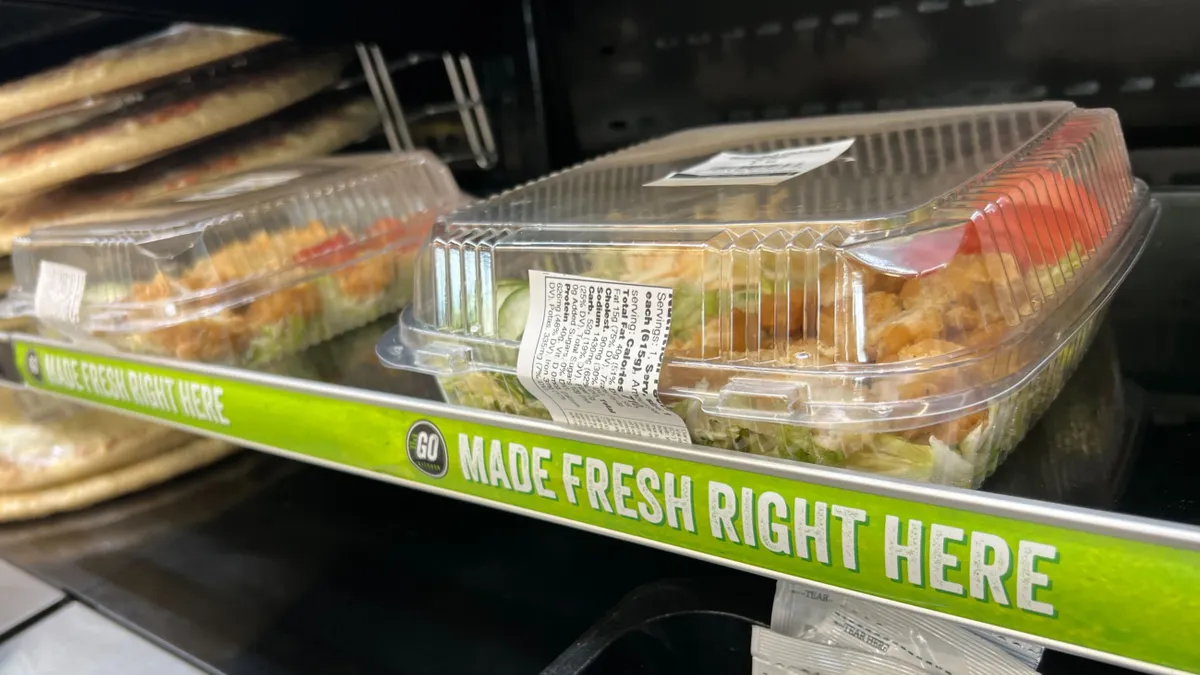7-Eleven has said in recent years that it wants to be a more food-focused convenience retailer in the U.S., the way it is in Japan. Fast forward to mid-October, and 7-Eleven opened the doors on the first store under a new prototype in Allen, Texas.
This new look, which the company calls its “new standard” design, was designed from the ground up to be larger and more food-centric, with fuel on offer in the forecourt. Hundreds of new builds over the next few years will use this design, with Texas expected to get two more by Thanksgiving, according to Narciso Lira, principal at Odyssey Services Group, which was the project management firm on those sites.
7-Eleven is not alone. On the East Coast, Rutter’s broke ground in May on a new 13,500-square-foot design with a “brand new look” inside and out. That prototype is also slated to be used in Rutter’s first Virginia location. Wawa, Yatco and other c-store chains have also developed and tested new store prototypes recently.
With these new store models, retailers are addressing the changing needs of consumers and the evolving markets where they live. 7-Eleven and Rutter’s both built new stores, but new store prototypes can also roll out through remodels or rebuilds.
Love’s Travel Stops & Country Stores reimagined a Virginia store into a food-forward prototype several years ago, revamping the interior to make an open kitchen the centerpiece, the company said earlier this year.
Love’s has updated 30 convenience stores since 2022 — part of a $1 billion, five-year initiative, said Randy Swain, the company’s director of construction and remodels. While some stores got only minor upgrades, said Swain, others were completely rebuilt, and some use that open-kitchen layout.
When developing and implementing new store prototypes, c-store owners need to be strategic, experts say. Getting this change right requires looking at data, evaluating who the customers are and what they are looking for from the store, and deciding what changes to make based on the return-on-investment. It also requires working through the renovation process with their contractors, promoting updates to their loyal customers and training their employees.
It’s important for c-stores to be constantly evolving and updating their brand, said Mike Lawshe, founder of c-store design and consulting firm Paragon Solutions. But it’s critical that after those renovations are made, everything points to that company’s brand, he noted.
Evolving with the customer’s needs
Chains don’t have to be large to reimagine their offering with successful prototype rollouts. Rusty Lantern Market hired Paragon to design its first location in 2015 in Topsham, Maine, and enlisted the firm again to develop a new “next generation” prototype at its Turner, Maine, location.
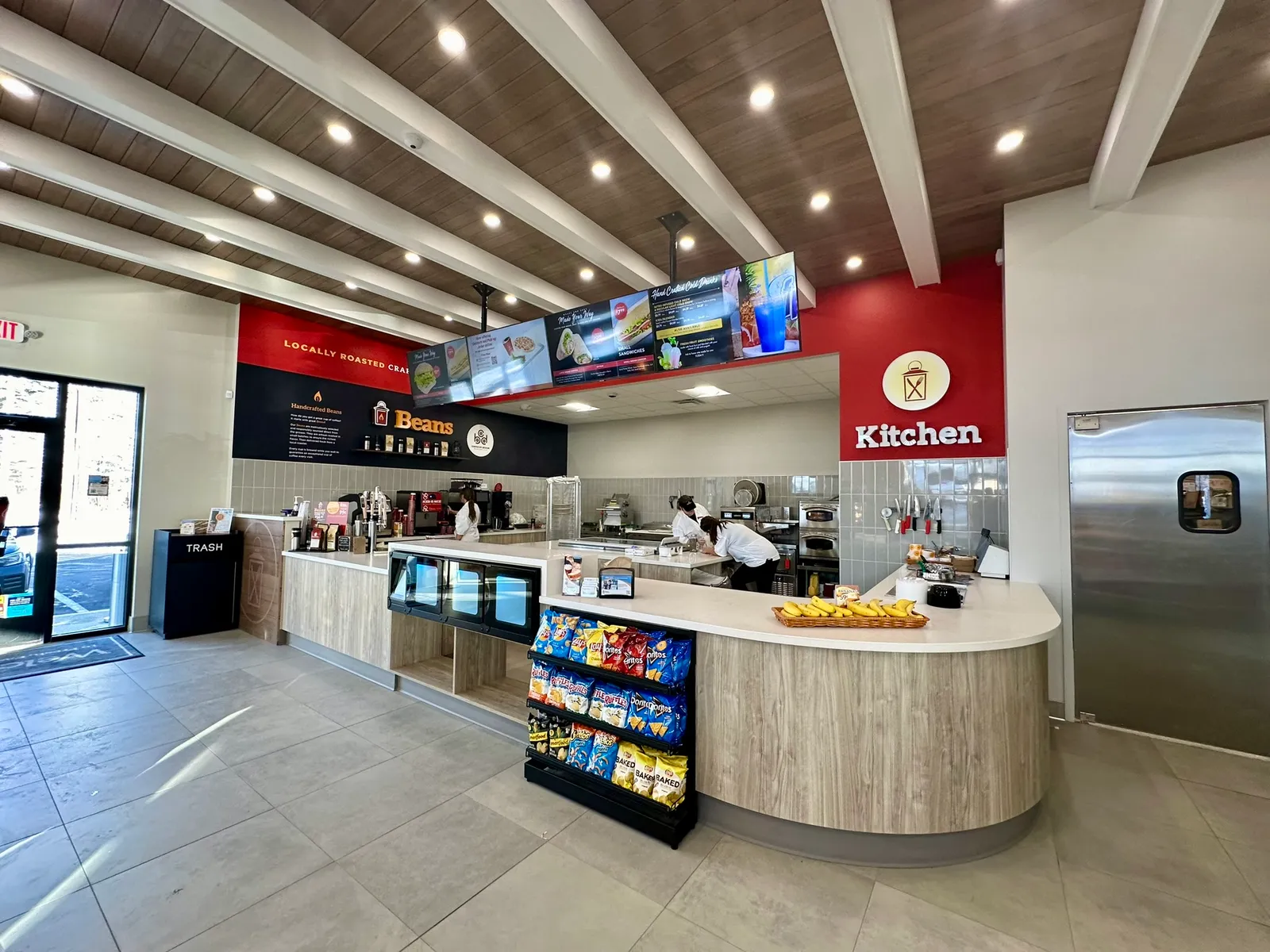
The new prototype included 1,600 square feet of retail space and a bigger emphasis on its foodservice program with a larger kitchen and a temperature-controlled food pickup holding area. Once reopened in December following a six-month remodel, the new look also included brighter lighting, a fireplace, touchless bathroom fixtures and lodge-style indoor and outdoor seating. The company brought this next-generation” store design to two other sites in the following few months.
Rusty Lantern wanted to elevate specific areas of the store, said Lawshe. For example, the chain had a nice coffee program, but the owner wanted to improve the coffee up to a barista level and become a coffee destination in Maine, he said.
“We changed everything,” said Lawshe.
Following the change, the store’s sales surged.
When making such significant changes to the store and brand, it’s critical that c-stores gather data to ensure the changes are aligned with what their customers’ needs and habits.
Lawshe said c-stores can use analytics collected from a range of methods such as surveys or in-person customer seminars to zero in on who their customer base is — and compare what those customers want to the items and services it's offering.
Food, for instance, has been a driver of recent change in the c-store industry, said Lawshe. Companies like Casey’s General Stores and 7-Eleven have been boosting their variety and trying new products and flavors, while others like Onvo and Rebel have debuted brand new programs. Those changes require kitchens, counters and sometimes even eating areas.
7-Eleven’s new standard format is explicitly tied to customer feedback. In 2019, the company began building food and innovation-focused locations called “evolution” stores. The company gathered feedback from the shoppers at those locations and used that to develop the new store design.
“[Customers] said that they wanted larger format convenience stores, stores that were food forward and that provided innovative digital offerings, personalized offerings and shopping experiences, as well as more fuel pumping locations,” DePinto said. “So we built these stores with our customers’ sentiments in mind.”
The new stores are expected to outperform older locations by 13% in the first year and by 30% after four years of operation, DePinto said. By the end of 2027, 7-Eleven plans to have more than 600 new standard stores in operation.
Doing the work
While listening to customers is crucial, c-stores also need to ask the right questions, said Lawshe. Customers may want a robust food service program, for instance, even though stores don’t have space for the infrastructure or the owner or company doesn’t have the ambition to launch such a program, he said. Trying to cram all the infrastructure needed for such a change into too small an area may not be worth it.
“Take a step back, and assess who you are,” Lawshe said.
C-store owners should do their homework, said Seth Maddox, creative director at King Retail Solutions, a retail store design agency. They should visit other stores within their state and community to see how those spaces function and whether there’s any area in which their store model is lacking.
“Are there a lot of notable pain points within your existing store? If so, that probably indicates there are things you could do better and it might be time to look into those,” said Maddox.
Any time a c-store owner makes changes to their store — whether introducing a product, updating an existing location or constructing a new facility — they need to keep the customer at the forefront of their decisions, said Swain.
“Understanding customers' needs and preferences allows us to create experiences that resonate with them,” said Swain.
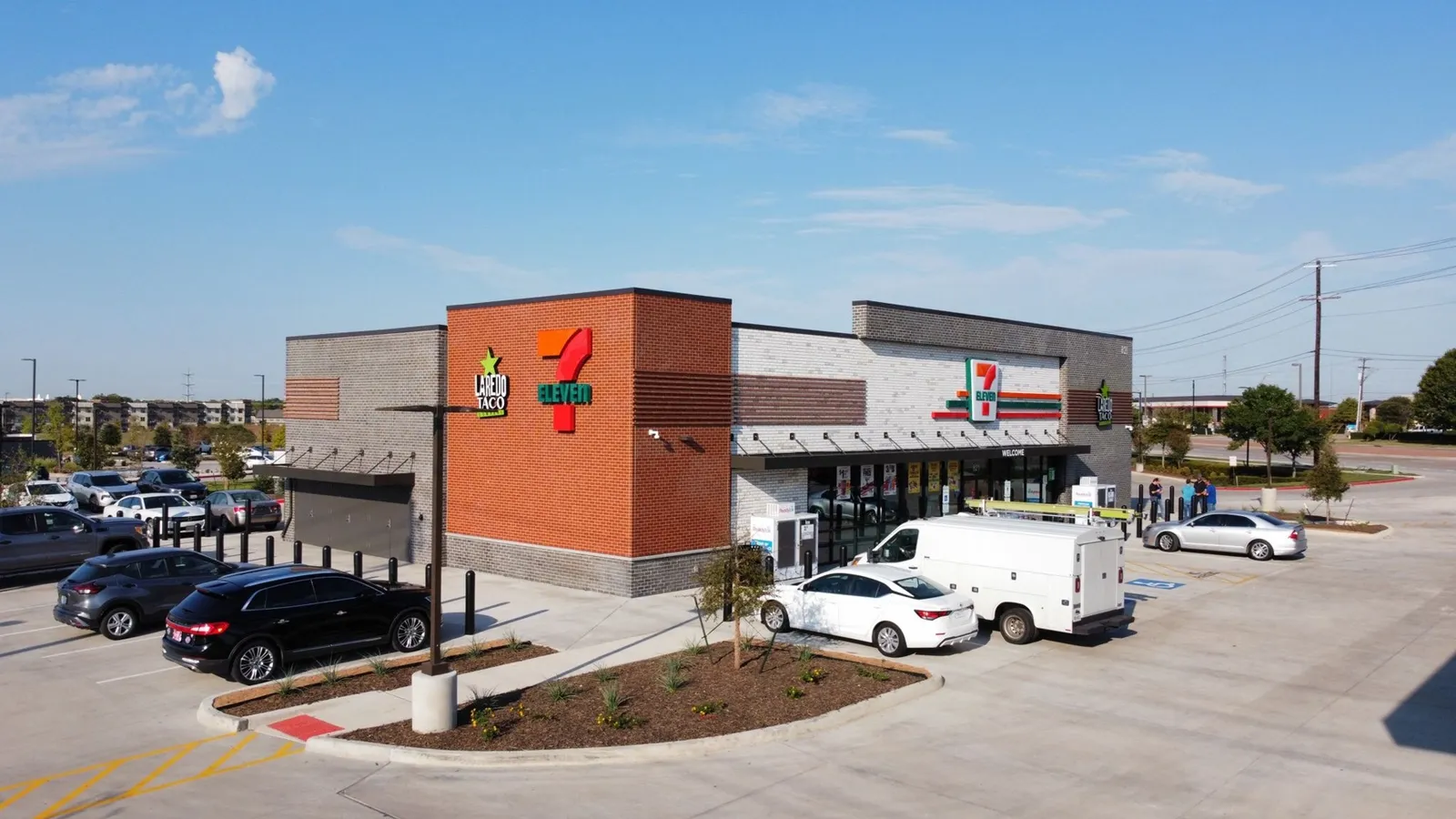
Deciding what changes to make, and where
There are a number of variables that should factor into when and how companies should rethink their c-stores, and when that work should be completed.
Each Love’s store remodel is unique, said Swain. The company determines what updates it needs to make based on an assessment of each location’s customer volume and the type of customer it attracts.
After figuring out what needs to be improved, c-stores also need to decide whether those redesigns are worth the return on investment. There is a lot of data out there that can help point to whether certain changes are worth the cost, said Maddox.
With the assets of the stores in mind, owners should then figure out what plans they have for those stores, and decide how to prioritize, said Lawshe. That process will establish a game plan for the stores that should be remodeled, and the time frame of those projects.
If the return on investment allows it, a company can roll a new look out to all its stores. But, in reality, many owners can’t afford to update them all at once, Lawshe said.
Sometimes it’s better to “test the water” with major redesigns at a flagship store, or a store that’s performing poorly, before “diving in” with all of them, said Maddox.
“We’ll take one of those locations to do a new design prototype,” said Maddox. “We design it, try it out, and test one store, and then revise as needed, and then replicate that into the future location.”

